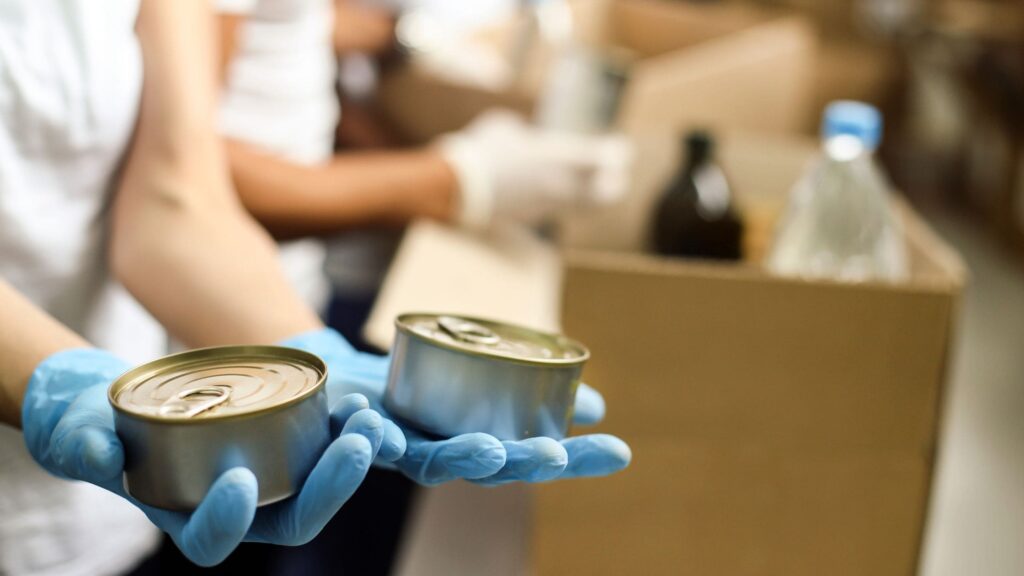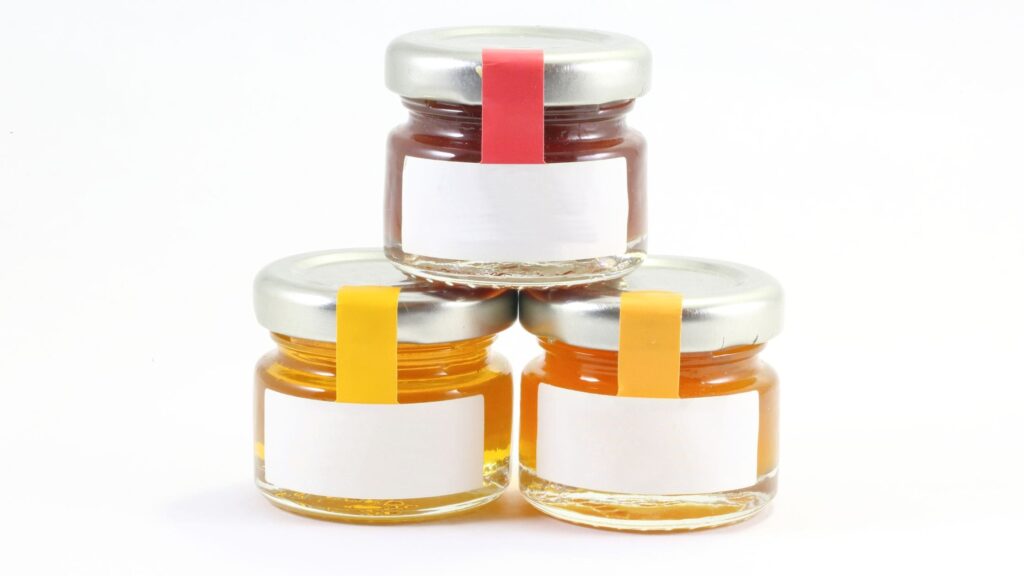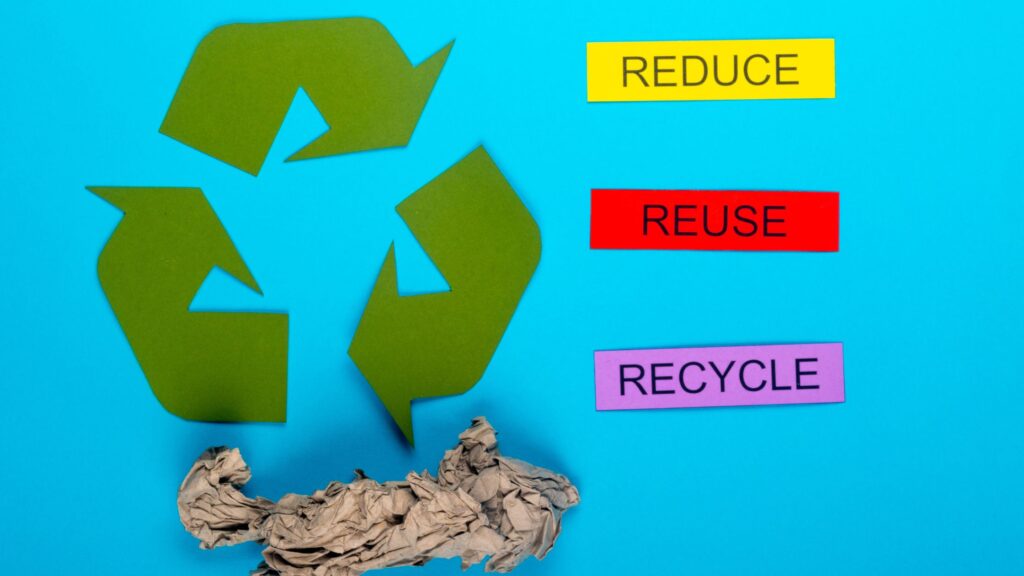The Ultimate Guide to Food Packaging Materials
Processed food is the backbone of the modern world. Whenever you are in a grocery store, you will see many food items separated from your touch only by a layer of food packaging.
Most people don’t pay much importance to food packaging materials and see them only as something that requires disposal, but packaging materials play a vital role.
The history of food packaging materials is far-reaching, more than what you might guess. In this article, we will answer the question: what are the types of food packaging materials? And examine the different types available nowadays, and the pros and cons of each. We will also glimpse what the future holds for food packaging materials and give some pointers on how to source lower-cost food packaging.
Food Packaging And Its Types

Many materials used in food packaging help keep food fresh and safe to eat and can also be used to promote and sell products. There are many types of food packaging, each with its advantages and disadvantages.
So, what are the different materials that can be used for packaging of food?
One of the most common types is plastic wrap. Plastic wrap is cheap, easy to use, and effective for keeping food fresh. However, it is not very durable, and it is not recyclable.
Another common type of food packaging is glass jars. Glass jars are more durable than plastic wrap and can be recycled. However, they are more expensive and are not as convenient to use.
Tin cans are another option. They are very durable and can be recycled. However, they are more expensive than plastic wrap and not as convenient to use.
Cardboard boxes are a versatile option. They come in various sizes and shapes and can be printed with logos or other marketing messages. Cardboard boxes are also recyclable. However, they are not as durable as some other options, and moisture can damage them.
Pouches are a newer type of food packaging that has become popular in recent years. Pouches are made from foil or plastic and are resealable after opening. Pouches are lightweight and take up less space than other types of packaging, making them ideal for travelers or people with limited storage space. However, pouches are not as durable as some other options and are sometimes difficult to open.
The evolution of packaging for food in the last century was astounding. There are multiple types available for preserving food integrity at every level. Learn more about what materials are used for food packaging by reading our article: What is Food Packaging?
What Are the Different Types of Materials Used for Food Packaging?
There is a wide variety of food packaging materials. Each material has its benefits and disadvantages. Here are the food packaging materials you will typically encounter:
Plastics

Plastic packaging is one of the most common types of packaging used in the food industry, widely used for the packaging of dry as well as wet foods.
Plastic is a low-cost packaging material. Food manufacturing companies use many different forms of plastic packaging:
Polyethylene
Low-density polyethylene and high-density polyethylene are the most widely used packaging material in the world. The physical and chemical properties of polythene make it adaptable to almost every food item.
There are many different subtypes of polyethylene packaging. These include PET, HDPE, and LDPE. Among these, PET (Polyethylene Terephthalate) is the most common, in the form of soft drinks bottles, milk bottles, and more.
The introduction of PET bottles was the driving factor behind replacing glass in the packaging of beverages. Glass jars and bottles were heavy and brittle, making shipping difficult and risky.
Glass bottled water solutions, juices, or syrups risk food waste due to glass shattering, leading to lost product. Plastic bottles eliminate such concerns, so food manufacturing companies have extensively replaced glass bottles with PET containers.
Polyvinyl Chloride
Polyvinyl chloride (PVC) is another commonly used plastic packaging material. You might have seen it in the packaging of medicines such as tablet blister packs, cling films, water bottle sleeves, adhesives tape, and more.
Advantages
- Low-cost food packaging materials
- Can handle both dry and wet food products
- Resistant to factors such as moisture
- Plastics provide the option of direct labeling
- Flexible packaging material
Disadvantages
- Harmful to the environment
- Most plastic packaging reacts badly with hot food items
- Not easily recyclable material
Metals

Metals are certainly some of the best food packaging materials. They are rigid and long-lasting and provide superior protection for many food products. Metal cans, boxes, and containers are common types of metal packaging.
Like plastics, many different types of metals are used in food packaging.
Tin
Tin was the first metal used for packing food as early as 1810. Its major disadvantage is corrosion. Pure tin corrodes when in direct contact with the food item. That is why tin is coated with protective layers when used for packaging.
Aluminum
While tin started the trend of metal packaging, aluminum is what drives it the most in today’s world. Aluminum foil is commonly used in households as a form of food preservation.
Laminated aluminum cans for beverages and containers in restaurants are also commonly used. The best thing about aluminum cans is they are easily recycled.
Steel
While steel isn’t one of the popular types of packaging materials like aluminum or tin, it still has a lot of applications. For instance, steel sheet is used to make containers, caps, and metal cans.
Advantages
- Rigid packaging material
- Protects during transportation as well as on the shelf
- Pest resistant
- Moisture resistant
- Prevents air contamination
- Suitable for wet or dry food items
- One of the most recyclable materials.
Disadvantages
- Expensive packaging method
- Prone to corrosion without protection layers
- Non-flexible packaging material
- Reacts to certain food items (acidic foods)
Glass

Glass is one of the oldest packaging materials. Archaeologists have found glass bottles even near the tombs of the ancient Egyptian civilization.
Glass is also one of the most inert food contact materials, and can be used to pack anything whether it is dry, wet, or even acidic. Glass is used extensively to make glass containers and bottles in primary packaging for juices, oils, syrups, and other liquids.
Advantages
- Highly corrosion-resistant and food-safe material
- Glass containers are aesthetically pleasing
- Transparent containers reveal the contents to consumers
- Non-corrosive and inert to acids
- Ideal for preserving food long term
- Hygienic and the safest packing material for human health
- Rigid packaging material
Disadvantages
- Highly brittle – glass containers and bottles can easily break
- Heavy and expensive compared to other alternatives
Wood Derivatives
Wooden packaging is not commonly used in the food industry, but many wood derivatives are.
Two of the most popular wood-derived products used in packaging are cardboard and paper:
Cardboard
Regardless of the primary packaging or secondary packaging method, tertiary packaging often uses corrugated cardboard boxes and folding cartons.
Consumers do not see or interact with this packaging because retail outlets remove it before displaying food items on the shelf.
Paper and Paper Board

Paper and paperboard are used as primary and secondary packaging materials by food manufacturers. It is a common choice in direct contact materials for dry food. But not for wet foods.
Paper packaging material is weak, but paperboard with added barrier properties has incredible strength. Boxes, trays, and cartons can be created using paperboard. There are many types of paperboard suitable for a range of food items.
Advantages
- Low-cost food packaging materials
- Very lightweight
- The low cost, light weight, and rigidity of cardboard make it irreplaceable as a tertiary packaging material.
- Easy to print on paper and cardboard
- Corrugated boxes and paper-based materials are recyclable. Recycled paper is commonly used in packaging.
Disadvantages
- Limited to the packaging of dry food items
- Paper packaging is weak and easily tears
Ceramics
Ceramics help eliminate toxic materials from food packaging. Ceramics come from minerals found in the soil, such as clay and quartz. An all-natural material, ceramic packaging is cheaper than metal and glass packaging.
Advantages
- Non-corrosive and nontoxic food packaging material
- Suitable for packaging wet and dry food products
- Preserves food quality due to being non-corrosive
- Prevents food contamination
- Aesthetically pleasing packages
- The raw material is biodegradable
Disadvantages
- Not entirely food safe
- Brittle and breaks easily, like glass
- More expensive than plastic packaging and wood derivatives
- Limited package sizes
Cellulose
Many people think of cellulose as a type of plastic packaging. However, cellulose is actually a plant-based product, making it one of the few organic materials in packaging.
Cellophane sheets and shrink wrap are made using cellulose. While it looks like plastic, it is a completely biodegradable material.
Advantages
- Sustainable plant-based products, making them a green option
- Biodegradable within a few months without special treatment required
- Moisture and heat-resistant food contact material
Disadvantages
- Weak and offers no protection against impact
- Unsuitable for food items with a long shelf life
What Does the Future Hold for Food Packaging Materials?
The current trend in the food packaging industry is moving towards lightweight and cheaper materials that do not compromise strength.
Additionally, innovations are making packaging that can increase the shelf life of food products. One such innovation is the introduction of antioxidants in the materials for packaging food.
Why sustainable food packaging is crucial for the industry and the environment
One of the key driving factors is the shift towards sustainability. Food manufacturers are looking for other packaging materials that are green and environmentally friendly.
Until recently, plastic packaging, the most common food contact material, has been non-biodegradable and non-recyclable. It has a disastrous negative environmental impact since it usually ends up in landfills.
How to Choose the Right Food Packaging Material?
Food manufacturing and processing companies often debate which raw materials to use for food safety. There are many options with different properties, and deciding on the right one can be challenging.
Here are some factors that you should consider when deciding between the various types of materials:
- Barrier properties
- Food safety
- Sustainability
- Carbon footprint
- Costs
- Ease of use for consumers
- Fully recyclable or not
- Shelf life
Different Ways to Reduce Food Packaging Costs
Packaging food is a significant portion of the food manufacturing cycle. Therefore, manufacturing companies are always searching for alternative methods to reduce the cost of packaging.
Here are some of these ways.
Automated Food Packaging Solutions

Using an ineffective packing method for food can create bottlenecks in food processing, leading to lost time and money. Automated packaging options are a must in order to meet the growing demand for high-speed production.
Food manufacturing units widely rely on PWR’s automated packaging robots to stay at the leading edge of the competition. Solutions from pick-and-place robots to automatic pallet loading are deployable throughout the packaging line.
They not only ensure superior food quality but also reduce costs and downtime.
Optimizing Package Size
One way to do this is through automated packaging solutions. Optimizing package size ensures less food and packaging waste.
In addition to reducing food waste, optimized package sizes can also help to reduce transportation expenses and environmental impacts.
If restaurants and grocery stores can purchase smaller packages, they will require fewer trucks and ships to transport their goods. That means fewer emissions and less congestion on our roads and waterways.
Optimizing package size using automated packaging machines can help us create a more sustainable future by reducing the amount of food we waste and minimizing our impact on the environment.
Using the optimal amount of packaging can reduce expenses; for example, using a standard-size template across the entire food production line.
Even a little extra packaging material for a single food product can mean huge added expenses when considering the large quantities of food in the entire supply chain.
Implementing Latest Innovations
As we mentioned earlier, more and more innovations are happening in the packaging industry to make the process cheaper while improving product quality.
Using the latest materials or equipment can help reduce the entire packaging cost.
Recycling

Recycled products are not just helpful for the environment. They are also beneficial for companies that want to save manufacturing expenses.
Replacing other materials with alternative food-safe recycled materials is cheaper and greener. Not only that, the end consumers can further recycle such material for best utilization.
Minimize Waste In the Packaging Process
There are many food packaging situations in which added layers serve no purpose. That not only worsens the eventual environmental impact but also leads to added costs for manufacturing companies. Therefore, it’s essential to design the food packaging process effectively while minimizing waste.
Smart Use of Material
There are many alternatives available nowadays that offer a better solution. For instance, some primary packaging materials can also serve as secondary packaging materials.
If the primary packaging is sufficiently protective, it eliminates any need for secondary packaging. There are many other ways in which food packers can implement wiser use of packaging materials.
Final Thoughts
Food packaging has extensive applications which demand the availability of various materials for packing different items. From low-cost plastic containers to rugged metal cans, the range is vast.
Combining the proper packaging material and technique, such as PWR automation options, can make consumers pick your product from the shelf.
Frequently Asked Questions (FAQs)
Here are the answers to some commonly asked questions about packaging options for food items:
What are the most commonly used food packaging materials?
Cardboard boxes, plastic wrap, and aluminum foil are some of the most common materials. Items such as cereal boxes or cracker boxes are made from cardboard. Plastic wrap is ideal for packaging smaller items such as sandwiches or leftovers. Aluminum foil is perfect for food items that need to be sealed tightly, such as packages of shredded cheese. While other materials are also used, these three are the most common ones.
Can PVC be used for food packaging?
Yes, PVC is a popular packaging material nowadays. It is a low-cost, lightweight, and easy-to-transport packaging option, making it usable for packing many food items in designs such as clamshell packaging and trays.









